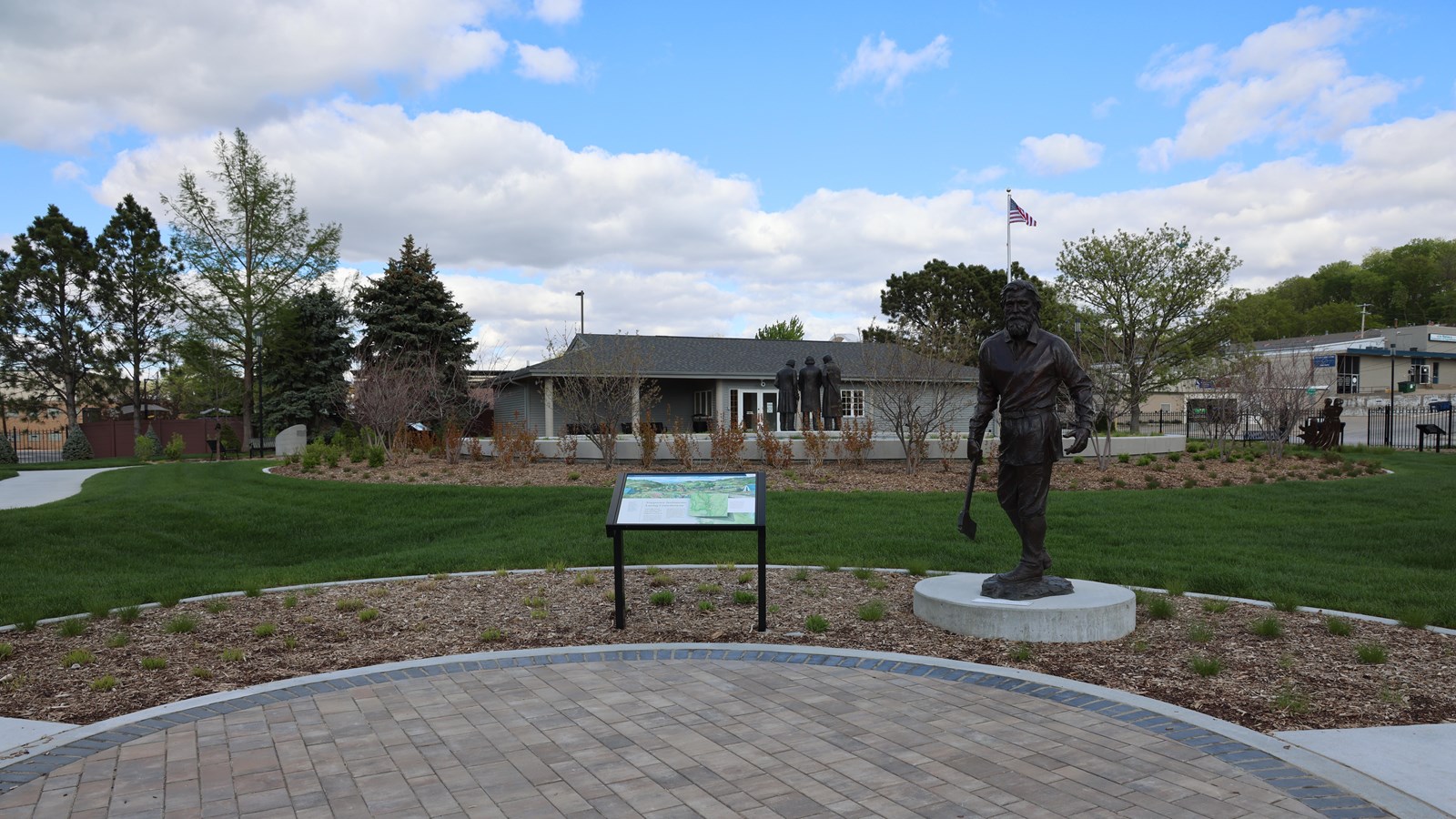Last updated: June 17, 2025
Place
Kanesville Memorial Historic Site

Photo/Rachael Chappell
Historical/Interpretive Information/Exhibits
In October 1847, Brigham Young returned to the Missouri River Valley after leading a vanguard party of emigrants to the Valley of the Great Salt Lake, Utah. Church leadership began planning a December gathering at Miller’s Hollow, an encampment on the east side of the Missouri River, to formally sustain Young as Church president. For the occasion, builders erected a 60 x 40-foot log building—the faith’s first tabernacle—to shelter 1,000 attending members, completing the building in about 2 ½ weeks. The Reorganization of the First Presidency, as the proceedings are known, at the Kanesville Tabernacle solidified Young’s authority in the ongoing Mormon emigration and settlement in the West.
But over that summer, the Latter-day Saints living at Winter Quarters on the west side of the river increasingly found themselves clashing with the Omaha Tribe, on whose lands they were living. The emigrants confronted the Omaha for poaching cattle, while the Omaha protested the emigrants’ cutting of timber and cultivation of thousands of acres of game range. Responding to tribal complaints, the federal Office of Indian Affairs vigorously pressured Church leaders to vacate their illegal settlement and move off Omaha lands. Brigham Young understood that the emigration would have a continuing need for a temporary settlement in the valley, and Winter Quarters had become unsuitable. To avoid the threat of government intercession or armed conflict with the Omaha, the emigrants abandoned Winter Quarters in April 1848 and moved east of the Missouri River to Miller’s Hollow.
That month, they renamed the settlement in honor of Thomas L. Kane, a well-connected friend who advocated politically for the Latter-day Saints. Kanesville served as a stopover and support station for the ongoing Mormon emigration from 1848 to1852—a mid-journey “jumping off” point for more than 25,000 Latter-day Saints heading west. Beginning in 1849, the town also attracted swarms of gold-seekers joining the rush to California along the Mormon Trail.
By 1850, Kanesville was home to more than 5,000 residents, with some 350 houses, a school and a courthouse, and many businesses. The magnificent log tabernacle, however, had to be torn down that year due to water damage and structural issues. Despite Kanesville’s success as a stopover and business venue, its Mormon residents abandoned the town and other Iowa settlements in 1852 to gather in Salt Lake City.The next year, non-Mormons reincorporated the town and changed its name to Council Bluffs.
Council Bluffs continue to serve overland trail traffic until completion of the transcontinental railroad in 1869. In 1996, The Church of Jesus Christ of Latter-day Saints built a replica tabernacle at the original Kanesville location, but it, too, had to be dismantled due to safety issues in 2022. The site today is a memorial with gardens, historical information, and sculptures. The memorial site and visitor center are open to the public free of admission.
Site Information
Location (222 E. Broadway, Council Bluffs, IA)
Safety Considerations
